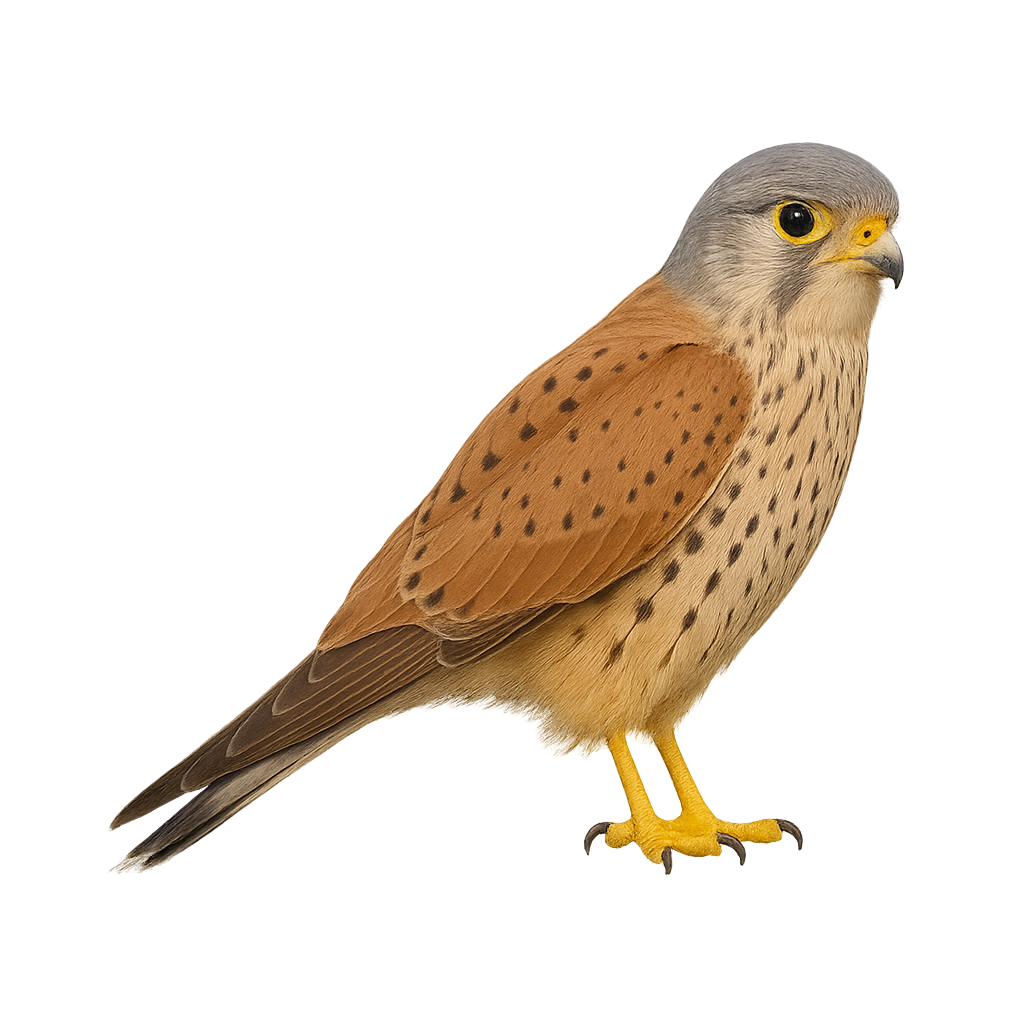Your wildlife photography guide.
Explore the kestrel in detail, study its behavior, prepare your shots.
Where to observe and photograph the kestrel in the wild
Learn where and when to spot the kestrel in the wild, how to identify the species based on distinctive features, and what natural environments it inhabits. The WildlifePhotographer app offers tailored photography tips that reflect the kestrel’s behavior, helping you capture better wildlife images. Explore the full species profile for key information including description, habitat, active periods, and approach techniques.
Kestrel
Scientific name: Falco tinnunculus

IUCN Status: Least Concern
Family: FALCONIDAE
Group: Birds
Sensitivity to human approach: Shy
Minimum approach distance: 30 m
Courtship display: March to April
Incubation: 27-31 jours
Hatchings: May to June
Habitat:
Meadows and open areas
Activity period :
Primarily active during the day, with peak activity in the morning and late afternoon.
Identification and description:
The Kestrel is a small raptor from the falcon family, easily recognizable by its light brown plumage and dark spots that adorn its back. It measures about 30 to 35 cm in length, with a wingspan of 70 to 80 cm, and weighs between 150 and 200 g. The adult male has more colorful plumage, with shades of gray and black bands on the tail, while the female has a duller, brownish plumage. This falcon is common throughout Europe, Asia, and North Africa, where it primarily inhabits fields, meadows, heathlands, and even urban areas. The Kestrel feeds mainly on small mammals, insects, reptiles, and sometimes smaller birds. It is especially known for its hovering flight technique, where it remains suspended in the air by rapidly beating its wings before diving to capture prey. While the species is not currently endangered, it faces threats such as habitat loss, reduced prey populations, and disruption by human activities.
Recommended lens:
300 mm – adjust based on distance, desired framing (portrait or habitat), and approach conditions.
Photography tips:
Use a telephoto lens to photograph from a distance, respecting the discreet and cautious nature of the species.
Photograph early in the morning or late in the afternoon, when soft light highlights the kestrel’s speckled reddish plumage and slender wings, especially when it is hovering in place or gliding gracefully.
Look for it in a variety of open habitats such as meadows, cultivated fields, heathlands, grassy areas, roadside embankments, and even urban fringes. It often hunts by sight, hovering above clearings in search of prey.
Be patient and discreet. The common kestrel is alert and sensitive to sudden movements. Avoid approaching when it is perched or hunting to avoid disturbing its natural behavior.
The Common Kestrel is classified as Least Concern by the IUCN. Although it is widespread and adaptable, it is still essential to protect its feeding and nesting habitats to help maintain healthy populations.
The WildlifePhotographer App is coming soon!
Be the first to explore the best nature spots, track rutting seasons, log your observations, and observe more wildlife.
Already 1 439 wildlife lovers subscribed worldwide

